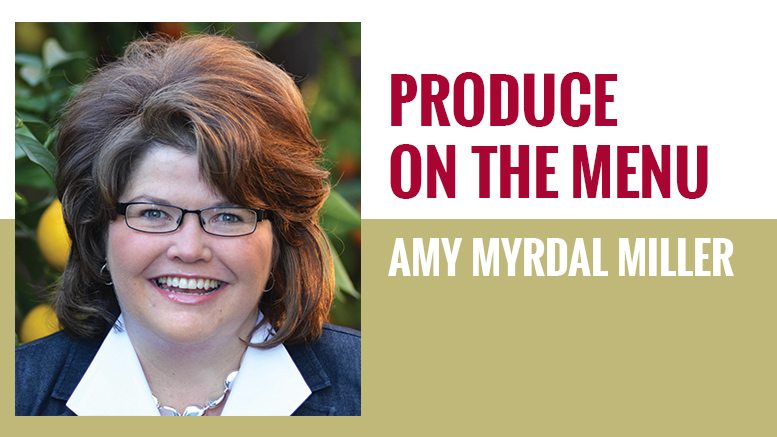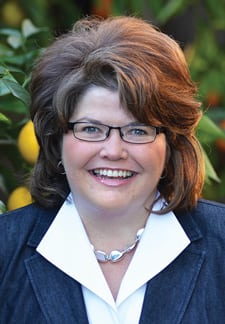Introducing New Produce Items To Foodservice
May 23, 2019 | 3 min to read
The article discusses two new clients focused on introducing unique produce items to U.S. foodservice operations. One client highlights lesser-known varieties of a common vegetable, emphasizing the importance of supply chain integrity to maintain unique sensory and nutritional qualities. The other client seeks to introduce a little-known 'super vegetable' to campus dining, leveraging educational opportunities to address awareness and taste concerns. Jeff Miller, a foodservice veteran, stresses the need for relationship-building and understanding customer challenges over mere selling tactics.


I have two new clients, both focused on introducing new produce items to foodservice operations in the United States. This work is providing many new opportunities for me to collaborate with other experts, engage with foodservice and culinary colleagues in new ways, and think obsessively about how to overcome their challenges.
One client produces seed for a widely recognized commodity product, but few people appreciate the diverse and often-unique sensory and nutrition properties of the many varieties they sell to U.S. farmers. The farmers are eager to gain a competitive advantage by growing a new variety that may create excitement for chefs as well as consumers.
The vegetable they grow is taken for granted, and it’s challenging to find ways to get chefs and foodservice menu R&D leaders to take the time to specify a certain variety. But if we find ways to do that, our next challenge is to ensure the supply chain protects the integrity of these unique varieties with proper handling and the right labeling. We can’t make promises to chefs or consumers about unique sensory or nutrition attributes only to find our product has been comingled with a vegetable that looks nearly identical but lacks the great flavors and other attributes the breeders have spent a decade or more perfecting.
My other new client is growing a vegetable that few in the United States have ever heard of. Their product has a strong brand name suggestive of the region of the world where this vegetable was discovered. They want to first introduce this super vegetable to campus dining operations as an ingredient that can enhance the nutrition properties of nearly any food or beverage. This strategy is a great fit because they face awareness challenges. Campus dining operations can provide unique educational opportunities to increase awareness of what the vegetable is, how it is grown, and its unique nutrition properties, as well as provide tasting opportunities that help overcome the fear of paying for something the diner may not like.
The Gen Z college students seem to be particularly price-sensitive even though for many they’re not paying with their hard-earned money; they’re paying with their parents’ money or using student loan funds.
I’m blessed to work with a collaborator on behalf of one of these clients who has significant foodservice experience as a top-level decision-maker. Jeff Miller is the former vice president of product innovation for Dunkin’ Brands. In this role, he worked with vendors and suppliers to find ingredient solutions and new products that would fit Dunkin & Baskin-Robbins’ quick-service operations at more than 20,000 restaurants around the globe. Today, Jeff runs Cutting Edge Innovation, a consultancy focused on helping clients apply competitive insights, culinary knowledge and consumer trends when developing world-class products.
Jeff knows first-hand what foodservice leaders need from companies offering a new ingredient or product. They need solutions, not ingredients. They need partners, not purchase orders. They need innovation that suits their operation. And they need price points that fit their brand promise. “When you get the opportunity to meet with a new foodservice customer, don’t waste their time trying to sell them. Spend that precious time developing the relationship and discovering their needs,” says Miller. “One of my favorite questions is, ‘What is the biggest challenge for you right now?’ It allows the person to reflect on where he or she needs help, and it allows me the opportunity to determine if the product or ingredient I’m representing can be the solution this person needs.”
What final advice does Miller have for produce industry leaders trying to introduce new produce items to foodservice operations? “Be prepared to ask the right questions about the volume, value-added attributes and distribution model this customer needs. And be ready to walk away if this is not the right time or the right fit. People in the foodservice industry tend to move around a lot. Developing the relationship will likely pay off for you in the long run.”
Amy Myrdal Miller, MS, RDN, FAND is a farmer’s daughter from North Dakota, award-winning dietitian, culinary nutrition expert, and founder and president of Farmer’s Daughter Consulting, Inc. She is the director of The Culinary Institute of America Healthy Menus R&D Collaborative and a consultant for the Produce for Better Health Foundation. You can learn more about her business at www.farmersdaughterconsulting.com, and you can follow her insights on food and flavor on social media @AmyMyrdalMiller
1 of 9 article in Produce Business May 2019

